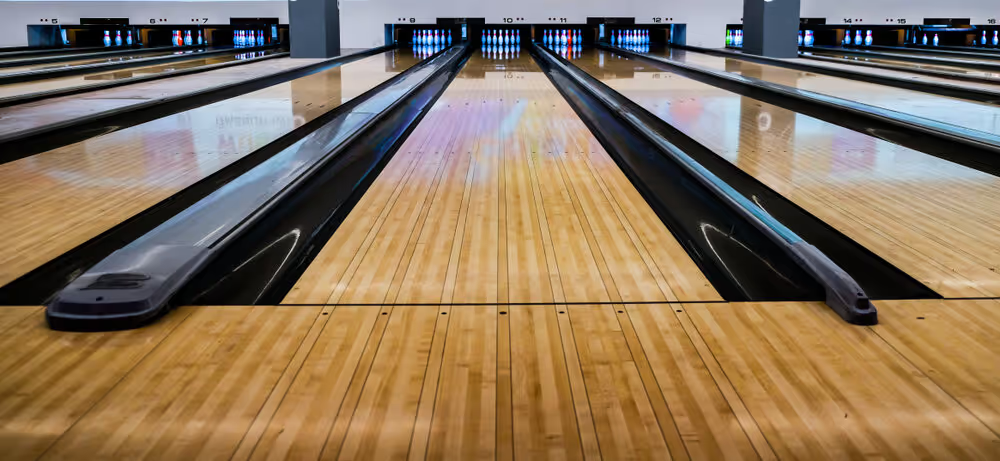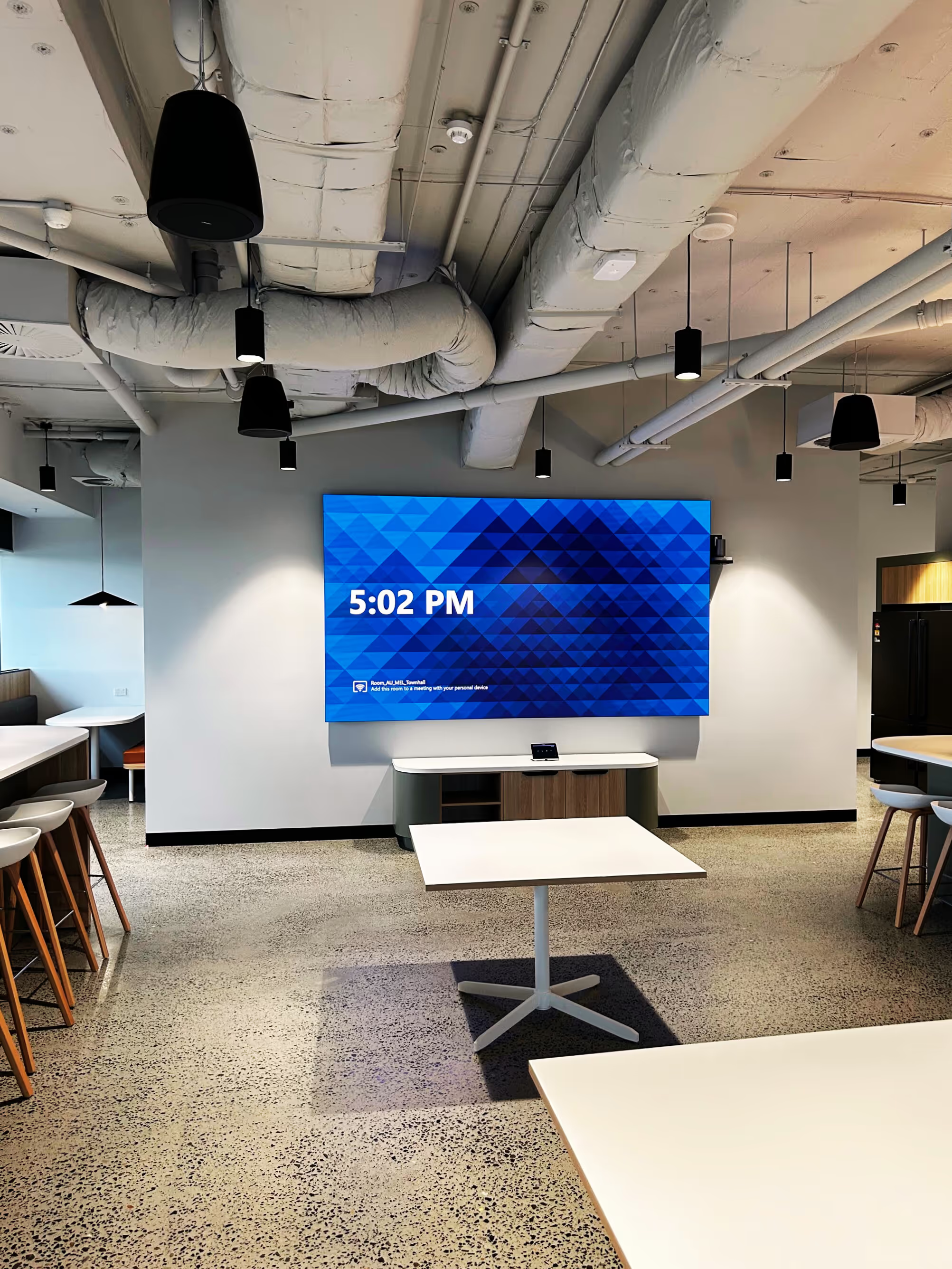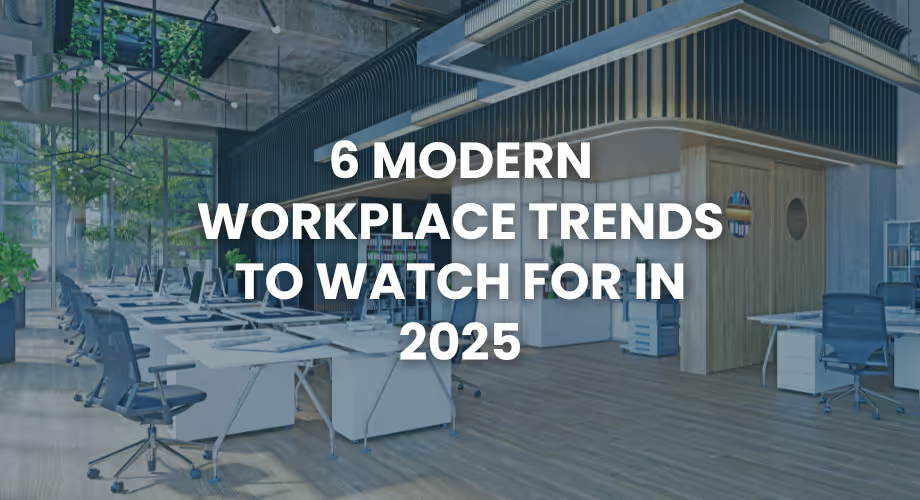In part 1 I talked about two conference room design aspects - sight lines and audio. I suggest reading this first which you can do so here.
In this part, we talk about another two equally important aspects - video and display.
Video.
Next time you’re on a conference call at home joining into a group of people seated in rows either side of a Boardroom table, try to picture this. Ten white objects standing at the far end of the table and a large shiny ball rolling down the table on a collision course with the objects. This folks is what we call the bowling alley effect, and it is like kryptonite to virtual meeting engagement and equity.

This is more of a communication killer in large rooms than it is in smaller spaces, particularly when someone at the end of the table speaks and, unless you recognise their voice, you literally have to guess who said what. Did we hear someone say cognitive tax again?
Conference room camera technology has improved dramatically in recent years to help address this problem, and most of the improvements are a result of AI technology baked into either the conferencing software or the camera(s) itself. There is only so much hardware and software can do though, and one thing they can’t do (at least yet) is bend time and space, which is why the physical design of a room should be done in conjunction with the technology design to optimise the experience and make it as natural, equitable and engaging as possible.
In part 1 I talked about sight lines, and the same ideas apply to video capture of people in the room. When you’re having a conversation with someone in person (yes that still happens), unless you’re particularly short or tall, you don’t look at the top of their head, you don’t look up their nose, you don’t look at the side of their head and you most certainly don’t look in the opposite direction entirely. You look at them front on, you’re interpreting their tone, their facial expressions and cues which enables you to better engage and understand the message that they’re delivering or the questions that they’re asking. This is the basis for efficient communication.
There are two ways this can be addressed: a single smart AI driven camera positioned at eye level beneath the front of room display and a furniture layout that delivers a front on camera view of each participant in the room; or a smart multi-camera system that provides multiple camera views throughout the room to capture everyone front on. The former is best suited to smaller telepresence style spaces for up to 8 people, and the latter is designed to cater for larger Boardroom style spaces where everyone can’t be captured front on from a single view point. In the single front of room camera scenario, it's critical to consider the field of view to ensure everyone in the room can actually be captured.
The single AI driven cameras can focus just on the active speaker or provide a tiled layout with everyone in the room having their own tile. Both are designed to mimic face to face interactions and make people connected remotely feel as though they’re on a level playing field instead of sitting at home on their lonesome with their chihuahua nipping at their ankles while speaking to the tops of peoples heads and daydreaming about firing a bowling ball down the centre of the table.
Multi-camera systems, like the solution from Q-SYS, can do the same and a whole lot more. A multi-camera system can include 2 cameras or 8 cameras, it all depends on the size and shape of the room and how the room is going to be used. The system is carefully programmed to work in unison with the audio system which relays to the camera system exactly where the person that is speaking is located in the room and selects the most appropriate preset to best frame that person. This works for Boardrooms by automatically following the conversation around the table, and works equally as well for town hall spaces where the conversation can be followed from the presenter, to people asking questions in the audience and back again. Everything is contextual and automated in that remote participants can always see who is speaking, when they’re speaking, and requires no user input for it to work. It’s a truly engaging experience.

Display.
How big? How many? Projector? A TV is a TV so we’ll just buy them from JB HiFi as its cheaper.
If I had a dollar…..
Let’s start from the top. Size matters! How big depends not on the size of the room but the distance from the display to the furthest viewer. It also depends on the nature of the content being presented and the decisions that need to be made based on said content. The calculation we use to determine the most appropriate size is called DISCAS (Display Image Size for 2D Content in Audiovisual Systems). We won’t delve into it now, if you want to learn more you can do so here.
Second point - no, dual screens aren’t always better. The purpose of dual screens in a conference room is to separate the content from the incoming video feed. Ultimately, in order to optimise sight lines dual screens typically means smaller screens therefore smaller content therefore less visible from a distance therefore, you get where we’re going with this. Stop straining those eyeballs and get a bigger screen!

Front of room displays are not always the only displays in the room though, or maybe they are but shouldn’t be! In deeper spaces, particularly training rooms and auditoriums, additional displays are often required to be installed in other areas to deliver content to those seated so far from the front of the room that they’re not within the parameters determined by using the DISCAS method (which applies to not just meeting rooms but any space where content is being delivered).
Next is display type which is something we talk to our clients about A LOT. LCD displays in general have come down in price significantly over the last few years which is great news, but going for the cheapest option is often the worst option. All LCD displays are not created equal. They have varying levels of brightness, different types of lighting (edge lit vs backlit) and different smarts and integration capabilities. Brightness is an important factor particularly in rooms with loads of natural light. Imagine not being able to use a conference room on summer afternoons because the western sun streaming in makes it impossible to see what’s on the TV. Surely not? Well it happens.
Brightness brings us to the next display type - projection. Still very much a valid technology and if anything is making a bit of a comeback thanks to Microsoft and their Teams Rooms Front Row solution which, by the way, is awesome. Projection works best in controlled environments with little or no natural light and where a large canvas is required. Plenty of manufacturers are producing some great laser 4K units that are in the realm of affordable for most organisations, and paired with ambient light rejection screens can produce great results. More specifically when implementing a Microsoft Teams Signature Room (a room designed to optimise the Front Row experience) a 21:9 canvas is required and this can be achieved more easily and affordably with projection than it can with LCD. There are a few 21:9 LCDs on the market, and they’re great, but they sit at a higher price point than projection options. In some environments though, LCD will be necessary and deliver more VALUE than the dollar for dollar cheaper projection option.
Aaaaaand that’s all folks! I hope my knowledge and ideas are of benefit to you and you’re able to take this away and implement in your own organisation. If you do you’ll be getting high fives in the hallway, and your hybrid work experience will be not only be sustainable but will begin to drive productivity and deliver better outcomes.
If you need a partner to go on the journey with you, please reach out to us anytime as our team would love to help in any way that we can to ensure your conference rooms are optimised for hybrid work and your people are empowered to do their best work yet.



.avif)